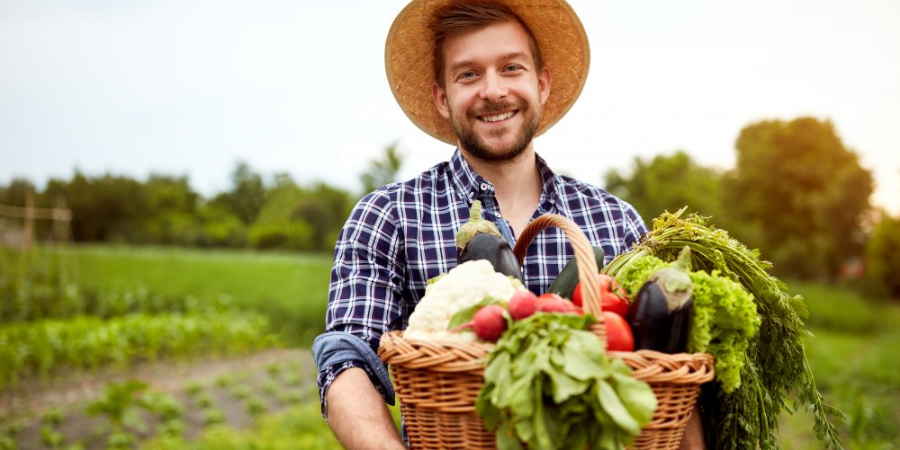A healthy harvest is more than just the end of a growing season. It embodies the journey of nurturing plants, understanding nutrition, and embracing sustainable practices. In this article, we will explore the concept of a healthful harvest, its significance in our lives, and practical tips for achieving it. Whether you’re an avid gardener or someone interested in healthier eating, this guide will inspire you to cultivate your own healthful harvest.
Understanding Healthy Harvest Meaning
A healthy harvest refers to the collection of crops that are not only plentiful but also rich in nutrients. This concept goes beyond quantity; it emphasizes quality. When you cultivate a healthful harvest, you focus on growing foods that contribute positively to your health and well-being.
Incorporating principles of organic gardening and permaculture can lead to a harvest that supports both your body and the environment.
Key Elements of a Healthy Harvest
- Nutrient Density: Foods should be rich in vitamins and minerals.
- Sustainability: Practices that maintain soil health and reduce chemical inputs.
- Variety: A diverse range of crops can provide a broader spectrum of nutrients.
The Importance of a Healthy Harvest
Why is a healthful harvest essential? The impact is profound, affecting personal health, community well-being, and environmental sustainability.
Benefits of a Healthy Harvest
| Benefit | Description |
|---|---|
| Improved Nutrition | Fresh produce is often higher in nutrients than processed foods. |
| Environmental Impact | Sustainable practices help protect ecosystems. |
| Economic Savings | Growing your own food can reduce grocery bills. |
| Community Connection | Sharing harvests fosters relationships and strengthens communities. |
By focusing on a healthful harvest, you contribute to a healthier lifestyle and a more sustainable planet.
Gardening for a Healthy Harvest
Gardening is at the heart of achieving a healthy harvest. It allows you to control what goes into your food and how it’s grown.
Choosing the Right Crops
Choosing the right crops is crucial for a successful and healthy harvest. Consider the following factors:
- Climate: Select plants suited to your local climate.
- Soil Type: Different crops thrive in various soil conditions.
- Personal Preference: Grow what you and your family enjoy eating.
Recommended Crops for a Healthy Harvest
| Crop | Nutritional Benefit | Growing Season |
|---|---|---|
| Kale | High in vitamins A, C, and K | Cool seasons |
| Tomatoes | Rich in antioxidants (lycopene) | Warm seasons |
| Carrots | Excellent source of beta-carotene | Cool seasons |
| Bell Peppers | High in vitamins C and B6 | Warm seasons |
| Spinach | Packed with iron and calcium | Cool seasons |
Sustainable Practices
Implementing sustainable gardening practices ensures that your harvest is not only healthy but also ethical. Here are some techniques to consider:
- Composting: Recycle kitchen scraps and garden waste to enrich soil.
- Crop Rotation: Prevent soil depletion and reduce pests.
- Organic Pest Control: Use natural predators or homemade solutions.
Nutrition and a Healthy Harvest
Once you’ve cultivated your crops, it’s essential to understand their nutritional value. A healthy harvest is not just about what you grow but how you prepare and consume it.
Maximizing Nutritional Value
To get the most from your harvest, consider these tips:
- Harvest at Peak Ripeness: Nutrients are highest when fruits and vegetables are fully ripe.
- Minimal Processing: Reduce cooking time to retain vitamins. Steaming is often better than boiling.
- Pairing Foods: Combine foods for enhanced nutritional absorption. For instance, pairing iron-rich spinach with vitamin C-rich tomatoes boosts iron absorption.
Food Preservation Techniques
After harvesting, preserving your bounty can extend the benefits of a healthy harvest. Here are some effective methods:
- Canning: Process fruits and vegetables to store for months.
- Freezing: Lock in freshness by freezing produce.
- Drying: A method that concentrates flavors and nutrients.
Real-life Examples of Healthy Harvests
Various communities and individuals successfully embrace the concept of a healthful harvest. Here are a few inspiring examples:
Community Gardens
Many urban areas have established community gardens where locals can grow food together. These gardens not only provide fresh produce but also promote social interaction and environmental awareness.
- Example: The Dixon Community Garden in California has transformed a vacant lot into a thriving space where residents grow vegetables and herbs, sharing the harvest with one another.
Home Gardening Success Stories
Individuals who take up home gardening often report significant benefits to their health and well-being.
- Example: A family in Ohio started a vegetable garden in their backyard, leading to a drastic reduction in their grocery bills and an increase in vegetable consumption.
Challenges in Achieving a Healthy Harvest
While the idea of a best harvest is appealing, several challenges can arise:
Common Challenges
| Challenge | Solution |
|---|---|
| Limited Space | Use vertical gardening techniques. |
| Poor Soil Quality | Amend soil with compost and organic matter. |
| Pest Infestations | Implement integrated pest management (IPM). |
| Weather Variability | Utilize row covers and greenhouse techniques. |
By being aware of these challenges and preparing for them, you can increase the chances of a successful, healthy harvest.
Healthy Harvest Company
Healthy Harvest Company is dedicated to promoting sustainable agriculture and providing fresh, organic produce to communities. With a focus on environmentally friendly practices, they cultivate a diverse range of fruits and vegetables, ensuring that each harvest is not only nutritious but also supports local ecosystems. Committed to quality, Healthy Harvest Company prioritizes farm-to-table freshness, allowing consumers to enjoy the benefits of seasonal eating. Through educational initiatives, they empower individuals to grow their own food, fostering a deeper connection to nature and healthier lifestyles. By choosing best harvest, customers invest in their well-being and the health of the planet.
Conclusion: Embracing Your Healthy Harvest
In summary, a healthful harvest is a multifaceted concept that encompasses gardening, nutrition, and sustainable practices. By understanding its importance and implementing practical strategies, you can cultivate your own healthy harvest.
From choosing nutrient-dense crops to utilizing effective preservation techniques, each step is vital in the journey toward better health. Remember, the goal is not only to produce food but to foster a lifestyle that values wellness and sustainability.
So grab your gardening tools, get your hands dirty, and start your journey towards a healthy harvest today! Whether you have a sprawling garden or a small balcony, the rewards of growing your own food are immense. Enjoy the process, celebrate your successes, and share your harvest with others. Happy gardening!


